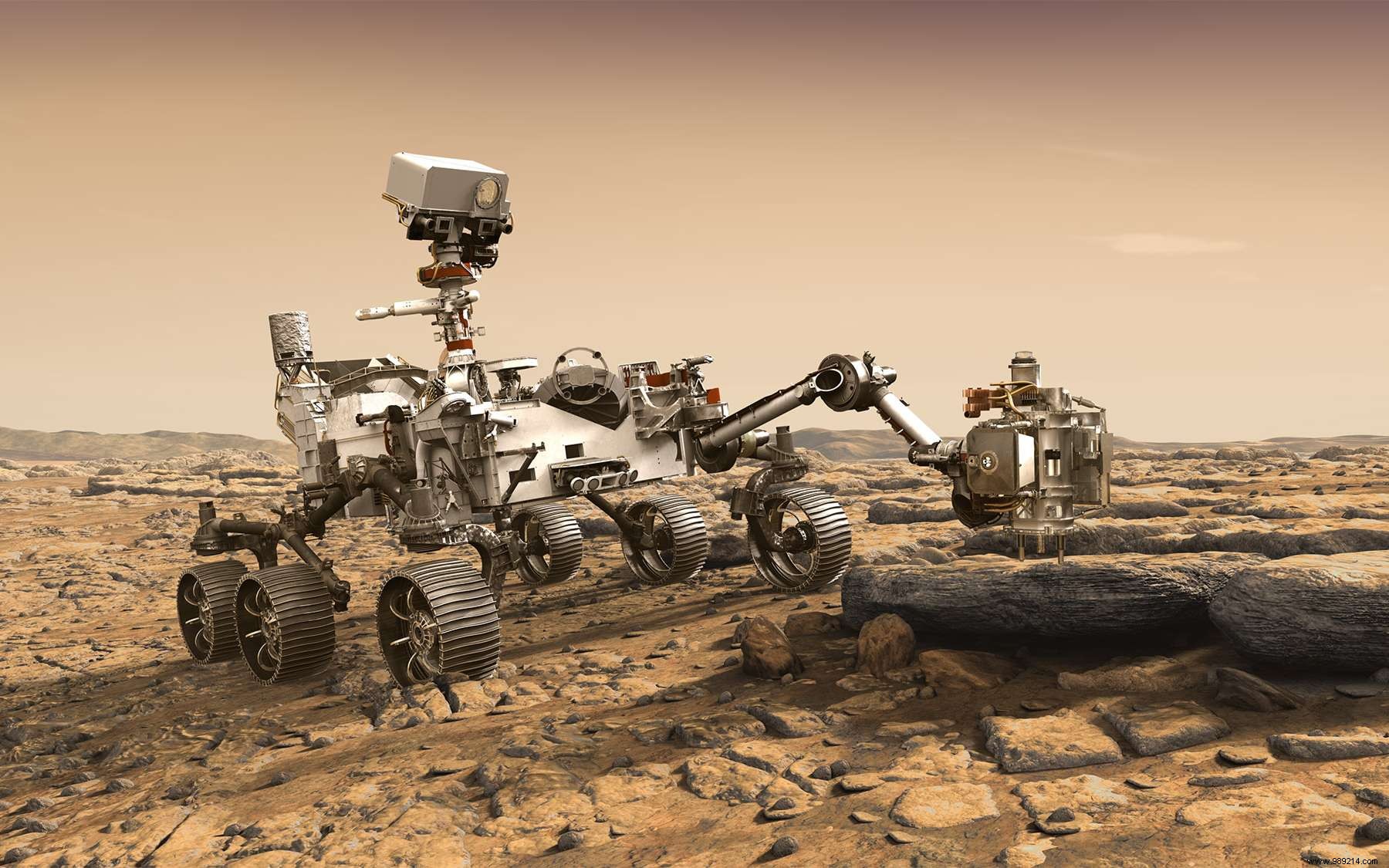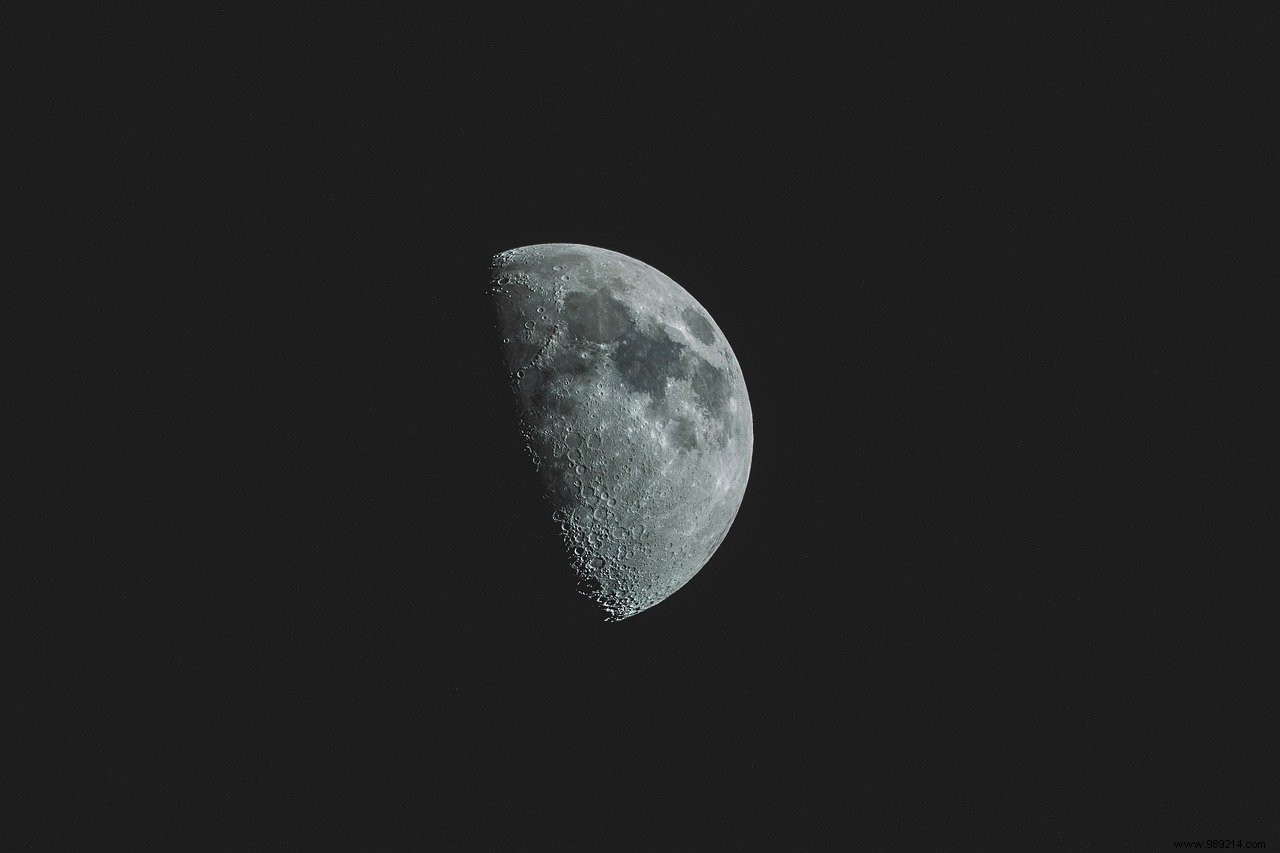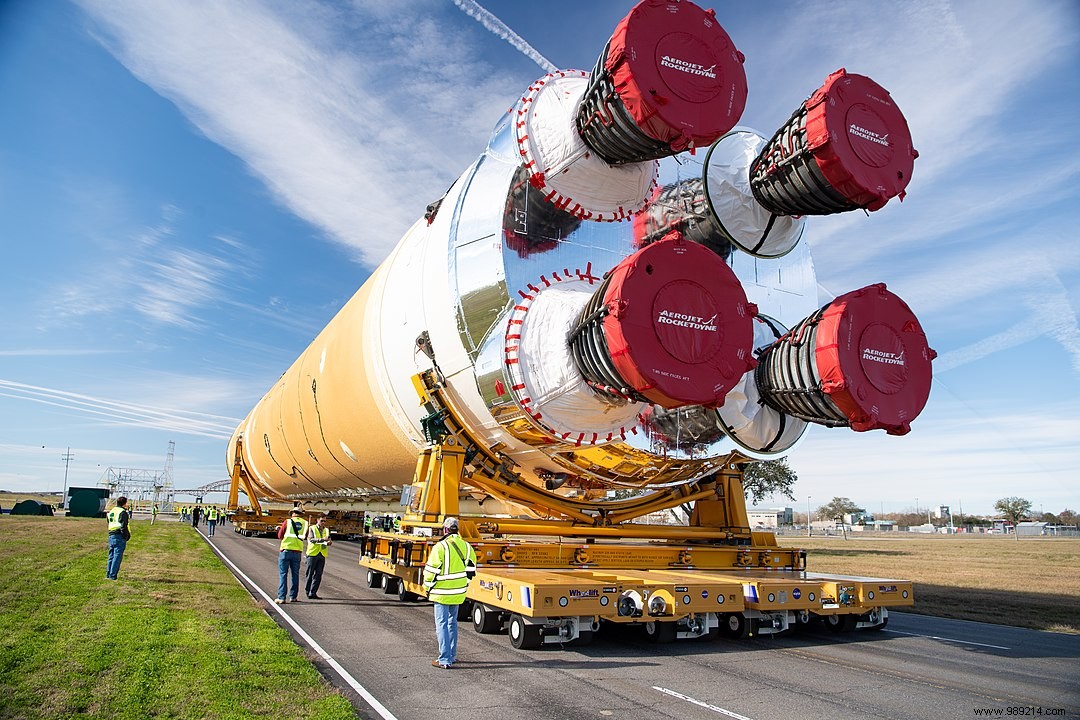From lunar and Martian explorations to the deployment of the James Webb Telescope, through the upcoming tests of the Starship and the SLS, the year 2021 promises to delight us . Here is a non-exhaustive list of the events that await us.
Every 26 months or so, when Earth and Mars are aligned favorably, ships can be sent to the Red Planet at more affordable prices. One of these launch windows opened this summer, and three countries took advantage of it.
We know Mars was once habitable. The big question is:has it been inhabited? To try to find out, the United States imagined two missions. The first will aim to collect rocks and cache them, while the second will aim to recover them to bring them back to Earth (collaboration with ESA) where they could be studied with state-of-the-art instrumentation.
The dispatch of NASA's Perseverance rover is the first part of this plan, which should run until 2032. Launched successfully on July 30, it is normally expected that the rover lands on February 18 at the bottom of Jezero Crater. Perseverance will then take care of probing several sites supposed to contain rocks mainly formed in an aqueous medium.
Note that the American agency also intends to take advantage of this mission to test Ingenuity, its new "helicopter". On site, this small rotorcraft will have only one objective, that of successfully flying. If successful, he will then be the first to do so on another planet.
The Chinese National Space Administration also distinguished itself this year with the dispatch of the first rover as part of its Tianwen-1 mission. The goal:to study the Martian geology and in particular the distribution of water ice in the basements. The mission is expected to arrive on Mars in April 2021 . If successful, the Martian surface will no longer be US-only territory.
Finally, let's not forget the Mars Hope mission, the United Arab Emirates' first interplanetary probe.
Placed in a high elliptical orbit, the probe will aim to focus on studying the Martian atmosphere. Hope is due to reach the Red Planet on February 9, 2021. If successful, the UAE will then be the fifth entity to successfully send a mission to the Red Planet after NASA, the Soviet Union, the European Space Agency (ESA) and the Indian Space Research Organization.

In 2021, several scheduled missions will help refine our understanding of the Moon. Next July, the private space company Astrobotic Technology, based in Pittsburgh, will notably launch its Peregrine One mission, on behalf of NASA. This "four-legged robot" will land on the northeast side of the near side of the Moon in a region called Lacus Mortis to test several instruments allowing, in the long term, a better navigation on our satellite.
Private company Intuitive Machines will also launch a commercial lander, named Nova-C, to the Moon in the summer of 2021. It will carry up to five NASA-sponsored instruments. NASA and will land on Oceanus Procellaru, where it will run for one lunar day, or approximately 14 Earth days.
Luna 25 will be a Russian exploration space mission focused on the Boguslavsky crater, located near the lunar south pole. It will be the first lunar space probe launched by Russian astronautics since 1976. Its main objective will be to analyze the polar regolith close to the surface (analysis of its water content and the proportion of other chemical elements) .
India will also be involved with its Chandrayaan-3 mission, which includes sending a lander and a small rover. Its launch is scheduled for the end of 2021, but it could be postponed until 2022.
Hoping this mission is successful. India has already tried its luck twice on the Moon. First time with the Chandrayaan-1 mission, in 2008. Unfortunately, after detecting "magmatic water" in a crater, the probe then crashed to the ground before being found by NASA in 2016. Then a second time with the Chandrayaan-2 mission, in September 2019. The engineers had then lost contact with the lander during its descent. The machine then crashed on the surface.

The most important is probably that of the Space Launch System (SLS), developed by NASA since 2011. It is indeed this system that will be responsible for sending the next crews to the Moon , and why not later to the planet Mars. Its first flight is scheduled for November 2021 , as part of the Artemis I mission, whose objective will be to send an unmanned Orion capsule around the Moon.
However, delays in the development of the launcher over the past few months suggest that this schedule could be pushed back. To be continued.
2021 should also be an exciting year for SpaceX. After a year 2020 marked by the first test flight of the Starship, SpaceX's future reusable interplanetary spacecraft, Elon Musk plans to multiply the tests from the beginning of next year. A first prototype of the Falcon Heavy booster will be deployed.
In parallel, the Falcon 9 launch cadence is expected to ramp up even further, fueled by Starlink satellite deployments. SpaceX will continue to send astronauts to the ISS as part of its collaboration with NASA. In the meantime, we should expect a first uncrewed launch of Boeing's Starliner spacecraft next January, with a possible manned launch this summer to the ISS.
Finally, other large launchers had to be able to take their "first steps" in space in parallel. These include the New Glenn rocket from Blue Origin, the Vulcan rocket from United Launch Alliance, the H3 launcher developed by JAXA, not to mention Ariane 6.

After suffering numerous delays and other budget overruns, the highly anticipated James Webb Telescope should normally be launched next October (fingers crossed). This next-generation infrared telescope will sit at Lagrange Point L2, approximately 1.5 million km from Earth. From this vantage point, it will gaze into the early Universe, probe galaxies, supermassive black holes, and provide new information about nearby exoplanets – including their atmospheric composition.
Activities aboard the International Space Station will proceed as usual, with the crew of Expedition 64 expected to do most of the work. In the meantime, China should take a big step forward with the launch of the main module of its own station, which should be completed by 2025. Eventually, it will replace the ISS.